writes Dr.Manzoor Ahmad Yetoo
National Highways Authority of India (NHAI), Government of India has decided to take up the development of various NH stretches/corridors in the country where the intensity of traffic has increased significantly and there is requirement of augmentation of capacity for safe and efficient movement of traffic.NH1A expansion programme is one of these projects going on which needs to be monitored effectively at state level, failing so we can change development into devastation. The project road alignment traverses through plain terrain and rolling terrain in most of the length and also through Hilly terrain for some stretches. Bypass / Realignment are proposed to be provided at below locations to avoid traffic congestion and ease of traffic: Existing legislation, institution and policies relevant to the Environmental Impact Assessment for NH-1A project at the national and state levels are reviewed and identified…
Central and State level environmental clearances required for this project can be as.Environmental Clearance from the MoEF is required for Highway project i.e. Category A
i) New National Highways
ii) Expansion of National Highways greater than 30 km, involving additional right of way greater than 20 m involving land acquisition.
Category B
All New State Highway projects and State Highway expansion projects in hilly terrain or in ecologically sensitive areas
As per MoEF Notification 14th September 2006, and its subsequent amendments, Environmental Clearance is required which is applicable for 8-12 months..
Forest Area Diversion requires;
MOEF New Delhi / MOEF Regional Office clearance Forestry clearance will be given in two stages. In 1st stage, the proposal shall be agreed to in principle in which usually the conditions relating to transfer, which is applicable for 12-15 months mutation and declaration as RF/PF under the Indian Forest Act, 1972, of equivalent nonforest land for compensatory afforestation and funds for raising compensatory afforestation thereof are stipulated and after receipt of compliance report from the State Government in respect of the stipulated conditions, formal approval under the Act shall be issued.
Notified Protected Forest Clearance & Tree Cutting Permission;
MOEF Regional Office / State Forest Department In 1986, when the MoEF enacted the Environmental
Protection Act, linear stretches of roadside plantation along many of the Highways were declared as protected forest. Thus, removal of trees from Protected Forests including roadside trees given a protected status shall require clearance from the MoEF. Applicability of the provisions of Forest Conservation) Act, 1980 to the linear (roadside) plantations was modified by a notification from the GoI, MoEF dated 18th Feb 1998. The 1998 MoEF Notification states: In the case of the “notified to be protected” roadside plantations, the clearance may be obtained from concerned Regional Offices of MoEF, irrespective of the area of plantation lost. If the concerned Regional Office does not accord the decision within 30 days of the receipt of fully completed application, the proponent agency may proceed
with the widening/expansion under intimation to the State Forest Department and MoEF.
For only tree cutting permission, the project authorities should get clearance from the state Govt
Projects also require Obtaining Consent to Establish (CTE) / No Objection Certificate (NOC) from State Pollution Control Board, in pursuant to the Water (Prevention and Control of Pollution) Act of 1974, and theAir (prevention and Control of Pollution) Act of 1981 for establishment of project.
Clearance Required During Construction
During construction stage the Concessionaire / Contractor will be required to obtain a number of
permissions, consents and clearances from various bodies are;.
Clearances & Approvals at Pre-construction & Construction Stage
Hot mix plants ,Crushers and Batching plants The Air(Prevention and control)
Act 1981 & Noise Pollution Rules 2000 from SPCB
2) Storage handling and transport of Hazardous materials Hazardous waste management
Rules from SPCB. 3) Location and layout of workers camp, equipment, storage yards.
EP Act 1986 and Environmental Management Plan from SPCB. 4) Quarries EP Act 1986 and Environmental
Management Plan fromSPCB & State Mining Dept. 5) Discharge from labour camp Water (Prevention and control of
Pollution) Act, 1974 from SPCB
6) Disposal of bituminous and scarified waste material Hazardous Waste management Rules from SPCB. 7) Drawl of ground water for construction EP Act 1986 CGWB / GGWA
POTENTIAL IMPACTS AND MITIGATION MEASURES
The major direct environmental impact and their mitigation measures required to be implemented are :
Negative Impact Mitigation Measures
Loss of trees •Two trees to be planted in place of one removed, ensuring
their survival rate.
•Stretches which are devoid of trees at present, will be
developed by planting trees
Loss of properties •Providing relocation sites.
•Giving compensation/assistance.
•Attempts to generate income restoration.
Loss of surface water sources •No impact on surface sources.
Ambient Air/ Noise Quality •Plantation of trees, especially those which are known as
pollution sink near market place.
•Improving the maintenance of vehicles.
Relocation of religious structures •The new sites of relocation will be properly developed.
Physical Environment
No change in the macro-climatic setting (precipitation, temperature and wind) is envisaged due to the project. The microclimate is likely to be temporarily modified by vegetation removal and the addition of increased pavement surface. This will result in an increase in daytime temperature on the road surface and soils due to loss of shade trees and vegetative cover which is very limited in the region.
Mitigation Measures
Impacts to the micro-climate will be unavoidable, but can be significant over a short term. In the long term, the impact will be reversible and can be mitigated by the establishment of new vegetation, including the addition of trees. The short term impact shall be minimized to the extent possible by minimizing the number of trees to be removed through minor adjustments to the road alignment.
Geology, Soil and Mineral Resources
Construction phase
Large quantities of sand and aggregate materials are required for road sub-base / base / pavement construction, and asphalt mixing. The volume of material required will depend on the volume of suitable material that is excavated during construction. Impacts resulting from the import of aggregate materials are highest if a new quarry is required. The impacts of establishing a new quarry are typically extensive, including impacts to soils/geology, agriculture or other land use, air quality (dust), noise/vibration (from blasting and/or scraping), traffic (truck hauling) and permanent aesthetic impacts to the landscape. In addition to these impacts, environmental effects will also be generated by the establishment and operation of concrete and asphalt plants that may be installed during operation. There is also potential for contamination of soils from spilled fuel, engine oil, bitumen / asphalt, etc. Routine runoff will also contain some contamination from fuel, oil and grease, but contamination of soils is unlikely due to drainage controls.
Mitigation Measures
The primary mitigation to reduce the impacts of sand and aggregate material excavation is to maximize the use of materials excavated from the construction site. Although specific quantities are not available at this stage of road design, it is expected that even with maximum use of available materials, some additional material will have to be excavated from borrow areas near the project. Mitigation to minimize this impact is to maximize the purchase of materials from pre established quarries. Any new borrow areas or quarries that are established within the vicinity of the road project, for the purposes of this road project, should be operated and closed in the context of a management plan, established prior to construction. The management plan should include provisions for minimizing noise and dust impacts during operation, and should provide details for rehabilitation at closure. Waste soils that are not suitable for construction should be used as much as possible to balance out fill areas, and residual volumes will be used in the rehabilitation of borrow areas for grading. Concrete and asphalt plants to be deployed for the project should be established at suitable distances from sensitive areas such as residential areas. Re-vegetation of embankment slopes with grasses and other herbs and fast growing plants to limit erosion potential should be ensured. The net environmental impacts to soils, geology and mineral resources could be significant during the construction stage of the project. Implementing mitigation measures, as outlined in Environmental Management Plan will help to reduce the significance of these impacts.
Operation Phase
In general, impacts to geology, soils and mineral resources during the operation stage of the project are limited to the potential contamination of soils from the spill of contaminants, usually as a result of vehicle accidents. Mitigation of these impacts is addressed in the Environmental Management Plan, largely as institutional arrangements for emergency service personnel, including training in emergency response and contingency planning, plus the provision of suitable spill containment and clean-up equipment.
Water Environment
Construction Phase
Construction activities can lead to marginal water quality degradation in the form of increased concentration of suspended solids (increase in turbidity), resulting from windblown dust. However these effects will be minor. Drilling and piling could potentially cause local ground water flow modifications leading to localized deterioration of vegetation and increased susceptibility to erosion, as well as water table depletion, potentially resulting in impacts to local (ground) water supplies.
Mitigation Measures
Any watercourse diversions shall be designed so as not to result in velocity impacts that could cause erosion of the stream channel, by incorporating energy dissipation into the diversion design. Alternate water supplies, or new wells must be provided to residents where de-watering of groundwater results in water supply impacts. Concrete and asphalt plants, equipment storage and maintenance areas, and construction camps must be located at a reasonable distance away from watercourses.
Operation Phase
Sedimentation results from windblown dust, as well as the potential for deposition of traces of NOx and SOx, although any increase in concentrations of these elements will result from the future increase in traffic volume rather than from development of the project. Runoff into surface receivers during operation will be limited by the provision of storm water drainage ditches, and where considered necessary, sedimentation ponds to settle out suspended solids, may be provided.
Air Environment
Construction Phase
Impacts to the air environment during construction will largely result from the generation of dust.
Dust will be generated as a result of site clearing and grading, heavy machinery travelling over exposed soils, truck traffic, and the production of construction materials at borrow pits and off-site quarries. Elevated levels of SO2, CO and hydrocarbons are likely from hot mix plant operations.
Operation Phase
Based on site surveys and field investigations, it is revealed that air quality of the study area is good. However, emission levels are expected to increase with the increase in vehicle numbers. Increase in levels of hydrocarbon as well as carbon monoxide is expected over their current levels in future years.
Mitigation Measures
During construction, water shall be sprinkled regularly on exposed surfaces to reduce adverse effects caused by dust and particulate matter. Vehicles delivering construction materials shall be covered to reduce spills and dust, and stringent control measures shall be exercised on the maintenance of construction equipment, machinery and vehicles. Borrow pits, quarries concrete plants and asphalt mixing plants shall be located more than 500 m away from any settlement.
Noise Environment
Construction Phase
Ambient noise levels vary from very low in the rural / agricultural areas, to levels marginally
higher in the urban, built-up areas. Noise impacts due to various construction activities are likely but are expected to be confined to the immediate vicinity of the project corridor. Increased noise levels are expected due to the movement of construction machinery, concrete and asphalt plant operations and blasting/scraping in the vicinity of borrow pits and quarries. The likely noise generated during excavation, loading and transportation of material near the borrow areas shall be in the range of 90 to 95 dB (A).
Operation Phase
During the operation stage of the project, increased traffic volumes along the highway will result
in increased noise levels.
Mitigation Measures
In order to minimize the rise in noise levels, mixing plants should be located at least 500m away from built-up areas. The contractor will be directed to provide earplugs to workers to reduce the impact. Noisy operations shall be scheduled to prevent night time activities when increases above ambient levels are higher. In addition to the above, the contractor shall follow guidelines given in CPCB for the operation of construction machinery.
Solid Waste Generation
The main sources of solid waste are (a) Excavation of earth from sides of existing pavement for widening to four lanes (b) Demolition of existing pavement, flexible shoulders in case of concentric widening for median construction and (c) Removal of existing PCC, RCC structures & stone/brick masonry, stone pitching for road widening. The solid waste mainly consists of top soil, overburden, rock, broken PCC / RCC material and demolished bituminous material.
Mitigation Measures
Top soil shall be restored on agricultural land, and will be used as top cover on slide slope stabilization. Overburden and excavated material are to be used in construction work for land filling and compaction in road embankment. The solid waste like broken PCC/RCC material and demolished bituminous material should be used for bottom filling of median and in embankment to the extent feasible. All the remaining waste shall be used for reclamation of borrow areas.
Socio-Economic Environment
Land Acquisition
Construction Phase
The improvement of the section of NH1 A, is expected to contribute to overall benefits in terms of
augmented access to basic service provision within the subproject area. There is positive response and unanimity amongst the community towards the need and benefits of the project. The project envisages widening of existing two-lane road to four lane which require land acquisition at few places along project road. Project road passes through rural environment except few settlements. Hence, land required for widening has mainly agricultural land use. The project involves land acquisition of cultivated land for bypasses, realignment and at Toll plaza locations
Land Use Changes
Changes in land use are most likely to occur as increased roadway access will increase the desirability of the land for purposes such as residential and commercial / industrial development. The increased attractiveness for these uses is likely to result in increased land values, which in turn could lead to land speculation. The availability of cheaper labour in the rural areas combined with increased access to urban markets could result in significant changes to land use and community dynamics in the areas that were previously deserted.
Monuments / Historical Areas
There are no known archaeological resources, or sites of cultural interest within the area that are of state or national level interest. However, there are many cultural properties existing within the ROW which are likely to be impacted.
Operation Phase
Traffic volumes and vehicle speeds are expected to increase after the proposed improvement /widening. Widening of the roadway / ROW will result in alterations to access roads / driveways to religious properties, shrines and other religious structures. In addition, access and egress from these access points will be more difficult due to increased vehicle movements and speeds. This in turn could result in increased risk of collisions, especially at night.
Mitigation Measures
Cultural properties need to be conserved by means of special protection and relocated or replaced in
consultation with the community. Places of worship that are affected shall be relocated in consultation with the local community.
Health, Safety and Hygiene of Construction Workers
The most significant impact of the project on public health is likely to arise from construction camps. These camps are anticipated to house up to 200 people for a period of 24-30 months. Given this concentration of people, the potential for disease and illness transmission will increase.
Mitigation Measures
Construction workers need to be fully trained and shall be provided adequate safety measures such as
safety helmets, safety boots, earplugs, and gloves. During construction regular training shall be given to construction workers in respect of safety measures as well as environmental protection measures. Construction workers shall also be provided ready access to on – or off-site heath care facilities to reduce the transmission of infectious diseases, and provide first aid for minor injuries.
Impacts to Indigenous Communities
There are few scheduled tribe communities reported all along the project road. These villages rely primarily on animal husbandry and agricultural activity for their main source of income, and follow a traditional subsistence lifestyle and no significant impacts will be observed thereon.
Ecological Resources
Vegetation
Construction Phase
Plantation on both the sides of the road is notified as notified protected forest. Strengthening and Widening of the proposed highway will result in the removal of large number of trees. The removal of these trees and the loss of vegetation cover will have some effect on local ecological balance such as the disruption of habitat for small birds, mammals, etc., that will be forced to migrate to other areas. The removal of vegetation may also lead to minor climatic changes such as altered surface hydrology, increased temperatures due to reduced shade cover, etc.
Mitigation Measures
Vegetation such as grasses and small shrubs will recover quickly, and for each tree that is removed, two trees will be planted within the ROW. Although it will take time for the trees to mature, the long term impact of removing the trees is expected to be minimal.
Operation Stage
In the project corridor, where the habitat is generally less disturbed / urbanized and species diversity is expected to be higher, there is expected to be regular animal movement across the highway by animals. Expansion of the highway would have a minor effect on this movement.
Mitigation Measures
No construction vehicle shall be allowed to enter into the interior of social forest area. During construction proper care should be exercised to avoid additional loss / cutting of trees. Construction camps shall be sited at least 1 km away from the dense plantation. To balance the ecological loss compensatory afforestation (two in number against each tree to be cut)is mandatory to be done according to the arboriculture and landscaping plan.
ENVIRONMENTAL MANAGEMENT PLAN
An Environmental Management Plan proposed along with institutional arrangements for effective implementation, monitoring and reporting needs to be implemented. It is envisaged that all stake holders i.e. the NHAI, the environmental consultant and public / NGO‟s and state Govt, must play their role in effective implementation of the EMP. The efforts of all the agencies shall be brought together by the „Environmental Management Unit‟ proposed to be set up under the Project Implementation Unit (PIU) of the NHA and state Govt also. This unit shall also arrange training of the staff involved in monitoring of EMP implementation, besides taking steps to create awareness amongst the public and stakeholders. The monitoring stations for environmental parameters shall be fixed based on observation of site conditions such as the nature of construction, developments, congestion, parking places, bus terminals, level of traffic and sources of pollution. The frequency and duration of testing will be as per the requirements of the SPCB. All tests shall be conducted, as per the relevant IS specification. There are a few primary long-term environmental concerns to be mitigated. These are conservation of natural resources, air pollution, noise pollution, surface water pollution, soil
erosion; cutting of trees, noise control and road safety. Cutting of trees shall be compensated by
transplantation of existing trees to the extent possible and compensatory afforestation of trees that have to be cut. Most environmental impacts from the project area arising during construction. Items such as air pollution, surface water pollution, ground water pollution, noise pollution, land pollution, preservation of ecological resources, respect for cultural and religion sentiments, labour health, accidents and safety needs to be controlled by making suitable provisions in the bid documents and assigning the responsibility for implementing mitigation measures to the contractor during the construction. The analysis of existing conditions, potential impacts and mitigation measures suggested above would need effective Environmental Mitigation Plan. Therefore an Environmental Mitigation Plan which has been proposed should be implemented with reviews. The EMP shall also include the organizational and staffing arrangements, environmental training, monitoring procedures and record keeping. A checklist for environmental monitoring also. A tentative cost, for implementing of various mitigation measures suggested on different items, needs proper evaluation.
On the basis of data analysis, nature of impacts and observations of the various affected groups due to project, it is concluded that the proposed highway expansions can be developed without causing significant adverse environmental impacts to the natural, social, economic or cultural environment of the area, assuming the mitigation measures identified in EIA report are incorporated into design and implementation stage.
The most important of these are:
The widening of the road should be limited to available ROW especially at congested
locations to the extent possible,
Appropriate mitigation measures as suggested in environmental assessment report shall
be incorporated especially in case of educational institutes, religious structures etc. Benefits of the project will be the reduction in air pollution due to better service level of the road, reduction in travel time and accidents, better connectivity from Jammu to Srinagar. The proposed widening of road requires diversion of many Ha of declared protected forest land. The project should envisage for compensatory afforestation and avenue plantation throughout the stretch with indigenous species which are suitable to the environment. The project requires felling of numerous trees. Temporary impact on air quality, water quality and noise levels are anticipated during the construction phase and an increase in the ambient noise level is anticipated during the operation phase of the project.
Proper mitigation measures proposed in the EMP for mitigating the negative impact should be reviewed from time to time. The environmental monitoring plan and reporting mechanism proposed as part of the EMP will ensure the proper implementation of the EMP. Thus the overall benefits of project need to be reaped by effective monitoring and feedback analysis
-(The author is an expert in environment ,projects & waste Management, occupational safety& health & pollution control and empanelled expert for Indo European chamber of commerce and industry).
(You may reach him at manzooryetoo@yahoo.co.in)








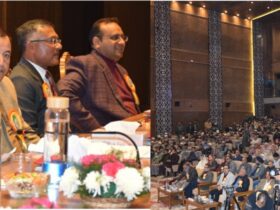

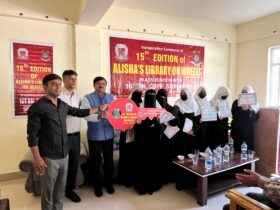
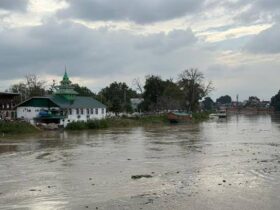
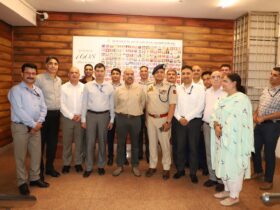


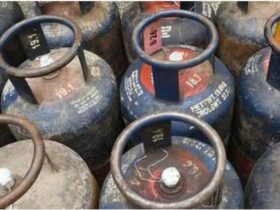

Leave a Reply